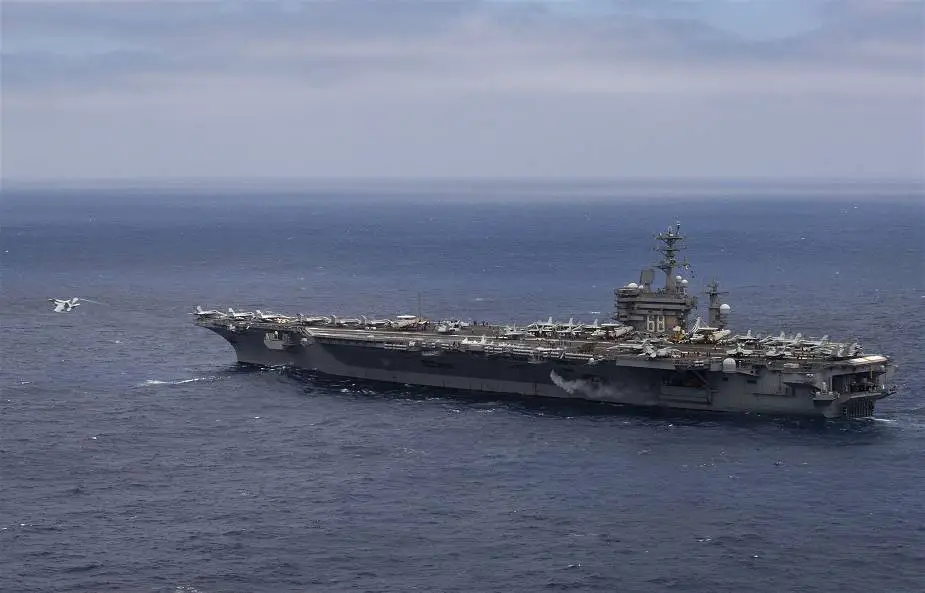Breaking news
US Navy aircraft carrier USS Nimitz conducts flight operations before deployment.
The U.S. Navy aircraft carrier USS Nimitz (CVN 68) conducts flight operations during a COMPTUEX (composite training unit exercise). The COMPTUEX is a rehearsal that each US Navy Carrier Strike Group performs before departing for deployment.
Follow Navy Recognition on Google News at this link
 The aircraft carrier USS Nimitz (CVN 68) conducts flight operations during a composite training unit exercise COMPTUEX. (Picture source US Navy)
The aircraft carrier USS Nimitz (CVN 68) conducts flight operations during a composite training unit exercise COMPTUEX. (Picture source US Navy)
The COMPTUEX (composite training unit exercise) is an intensive exercise designed to fully integrate units of the Nimitz Carrier Strike Group (CSG) while testing a strike group's ability as a whole to carry out sustained combat operations from the sea.
The USS Nimitz is a supercarrier of the U.S. Navy and the lead ship of her class. One of the largest warships in the world, she was laid down, launched and commissioned as CVAN 68 but was later re-designated CVN 68 (nuclear-powered multi-mission aircraft carrier) on June 30, 1975 as part of the fleet realignment. Nimitz was homeported at Naval Station Norfolk until 1987, when she was relocated to Naval Station Bremerton in Washington State (now part of Naval Base Kitsap).
Following her Refueling and Complex Overhaul in 2001, her homeport was changed to Naval Air Station North Island in San Diego. The homeport of Nimitz was again moved to Naval Station Everett in Washington State in 2012. In January 2015, Nimitz changed homeport from Everett back to Naval Base Kitsap.
Nimitz is part of Carrier Strike Group Eleven (CSG-11) with Carrier Air Wing Seventeen (CVW-17) embarked, with Nimitz as the flagship of the strike group and the home of the commander of Destroyer Squadron 23.
Nimitz-class aircraft carriers are powered by two A4W nuclear reactors, housed in separate compartments. The resulting steam spins four propeller shafts, producing a maximum speed of over 30 knots (56 km/h) and a maximum power of 260,000 brake horsepower (190 MW).[4] The reactors produce heat through nuclear fission which heats water.
In order for a carrier to deploy, it must embark one of ten Carrier Air Wings (CVW). The aircraft carriers can accommodate a maximum of 130 F/A-18 Hornets[32] or 85–90 aircraft of different types, but current numbers are typically 64 aircraft. A typical carrier air wing can include 24–36 F/A-18E or F Super Hornets as strike fighters; two squadrons of 10–12 F/A-18C Hornets, with one of these often provided by the U.S. Marine Corps (VMFA), also as strike fighters; 4–6 EA-18G Growlers for electronic warfare; 4–6 E-2C or D Hawkeyes for airborne early warning (AEW), C-2 Greyhounds used for logistics (to be replaced by MV-22 Ospreys); and a Helicopter Antisubmarine Squadron of 6–8 SH-60F and HH-60H Seahawks.


























